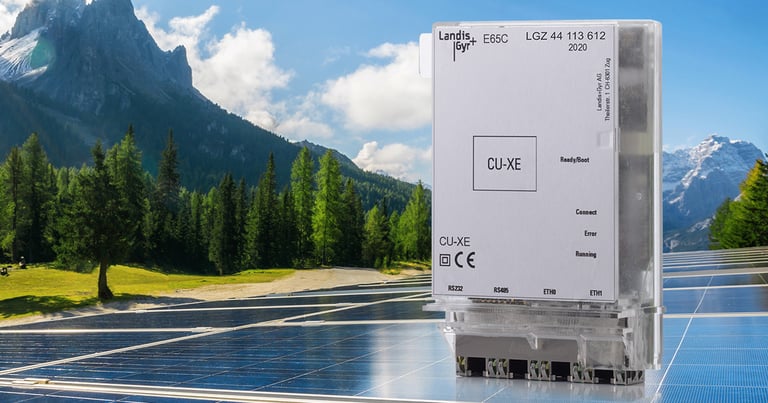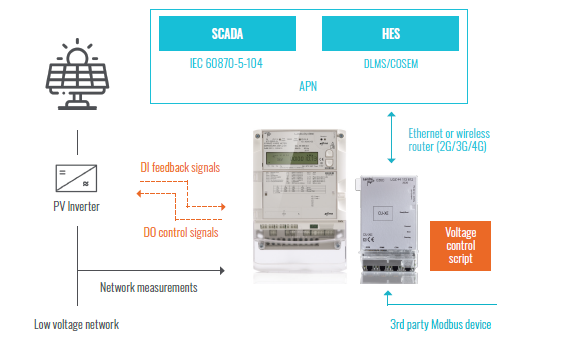
The transition towards electrical energy generation from renewables is one of the key prerequisites for creating a greener and more sustainable future for all of us. Great progress has been achieved in integrating renewable sources into the network, and according to the International Energy Agency, the electricity generation specifically from photovoltaics will grow 15% per year until 2030. This is a success - however, the integration of photovoltaic plants also comes with quite a few challenges.
The influx of solar generated power is decentralized, intermittent and unpredictable as the weather. Varying power output translates into voltage fluctuations which are influencing the low-voltage network. This causes a problem for utilities’ grid management and operations. Voltage fluctuations result in poor power quality, which is another challenge for DSOs. On one side, they are obliged to meet the requirements according to EN 50160, on the other, they have to make sure end-consumers are satisfied.
Furthermore, there is an economical aspect that must not be overlooked: Initial incentives for renewable energy generation, so called feed-in tariffs, have ended. Now PV plant owners are faced with a task to maximize the plants’ revenue while at the same time needing to fulfill the DSO’s requirements around the connection point to the network.
Landis+Gyr offers a solution that uses existing hardware with a new application on top to address all challenges at once.
Edge intelligence brings more visibility and control
DSOs need to make numerous decisions every day to keep the network in operation. For our solution we are using grid-edge intelligence, so that decisions can be automated and solve problems where and when they appear.
The centerpiece of our voltage control application is our communication module E65C CU-XE with RTU functionality and SCADA connectivity. This device combines communication functionalities with multiple communication protocols and edge computational capacity to support these new applications. As a result, the E65C CU-XE improves network visibility on the edge by providing real-time data to SCADA and HES and enables real-time local decision making.
How it works and who can benefit
The voltage control script receives measurement data (voltage measurements) from the Landis+Gyr S650 Smart Grid Terminal and does real-time comparison with set threshold levels. The algorithm result triggers S650’s output relays connected to a PV inverter to manage reactive and active power output of the PV plant. With that, voltage levels in the network are always within allowed limits. To put more trust in the solution, inverters can send feedback signals to the S650’s inputs, which are forwarded via the communication module.
Aside from the voltage control scheme, S650 supports all the traditional energy billing features and power quality measurements.
When it comes to photovoltaics, DSOs are not the only stakeholders. Retailers, PV plant operators and PV plant owners share the common interest of maximizing the plants’ revenues. With our voltage control solution, they can optimize the power output to make the most revenue and at the same time fulfill the necessary requirements. With this solution, the DSO will never again have to switch off PV plant for causing power quality issues in the network.
Moreover, the S650 Smart Grid Terminal and the CU-XE as a control element support faster integration using existing infrastructure and well-known protocols. Last, but not least, the solution provides independence from PV inverter providers’ proprietary solutions.

Do you have questions or do you want to learn more about this solution?





